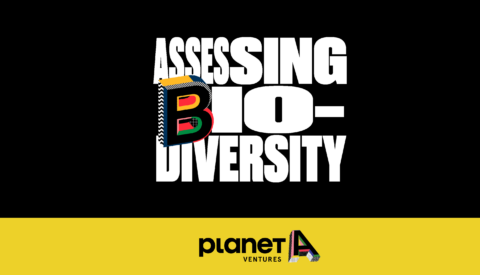


We’ve already transgressed six of the nine quantitative planetary boundaries within which life on earth can continue to develop and thrive for future generations.
We need an economy that operates within our planet’s limits.
By putting science first, venture capital has the power to help build a regenerative economy and accelerate the transformation to a sustainable future. That is why we anchor impact into every step of our investment process.
Our in-house team of scientists assesses the environmental impact potential of an innovation – be it a product or a service. We are the first European VC with a science team that can veto investment decisions if there is no significant positive impact.
Unlike ESG funds that aim to limit negative impacts and financial risks, we only invest if a company can demonstrate a positive, quantifiable impact in at least one of four key areas: climate mitigation, resource savings, biodiversity protection and/or reduction in waste.
We don’t target companies that do something a little better in these areas – we are looking for the champions of change that bring a disruptive quality into an industry, are highly innovative, and help change systems.
Post investment we set impact KPIs for our portfolio companies and tie our carried interest to achieving these impact objectives.

Our experts calculate consequential life cycle assessments (LCAs) to quantify and forecast the environmental effects of a product or service. They do this by assessing the entire life cycle from the extraction of the raw materials through the processing, manufacturing, distribution, and use phase to the very end-of-life.
We use reference products to determine how much better an innovation really is. Our process allows us to evaluate not only greenhouse gas emissions but the entire ecological footprint, including water, land use, or energy demand.
In the case of enabling technologies, we perform a rigorous scientific analysis using third-party data to determine the systemic impact of a product or service.
Our Below One Fund I is classified as Article 9 (i.e. a “dark green” fund) under the EU Sustainable Finance Disclosure Regulation (SFDR). Any Article 9 fund must prove how it contributes to an environmental objective and must assess its investments against the principle of “doing no significant harm.”
Our portfolio is also 100% in line with the EU taxonomy.

The assessment of the impact of our investment decisions is a key requirement of informed decision-making. Therefore, we assess the environmental impact of all our investment opportunities, use impact assessments to identify champions of change, support our portfolio companies in improving their positive impact, and last but not least, track and forecast the impact of our portfolio companies.
To make impact quantifiable, comparable and understandable, we need a versatile method that can be applied across disciplines. Life Cycle Assessments offer a holistic, science-based, detailed, and robust environmental impact assessment. This white paper gives an overview of how to assess environmental impact with LCAs, as well as the benefits it provides for founders and investors.
As the first European VC, we developed an applicable framework and method to assess the impact of technologies on biodiversity. We used the best available frameworks, combined them with life cycle assessment methods, integrated additional models and data sets and came up with a method that allows us to assess the impact of our investment opportunities on biodiversity.
Our Impact Report shares our scientific approach to investing, which industries we’ve been focusing on, valuable deep dives on a range of industries, and highlights our outstanding founders that drive our mission forward.
Read more on our investment process and find out how we measure impact.
Our Below One Fund I (Capital F) is classified as Article 9 (i.e. a “dark green” fund) under the EU Sustainable Finance Disclosure Regulation (SFDR). Our portfolio is therefore 100% in line with the EU taxonomy. This makes us the first German venture fund to be classified as Art. 9.